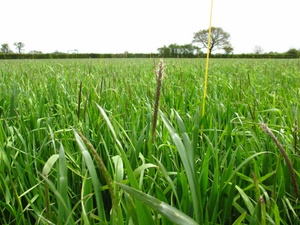Our garden and allotment are now in full production and currently we do not have to buy any vegetables. This weekend we ate our first tomatoes and the first aubergines are a few days away. We really enjoy gardening but over the years I have often considered whether producing our own vegetables is economically worthwhile. This is particularly so when my wife has to struggle with a dirty and misshapen parsnip when the local corner store (Waitrose) can provide washed and perfectly shaped roots!
It is with this in mind that I recently studied the price of vegetables in the local corner store whilst sipping my free coffee. After a while I came to the conclusion that it was worth growing the basics such as potatoes, lettuce, onions, shallots, leeks, parsnips, broad, French and runner beans, butternut squash and courgettes. However, things like tomatoes, aubergines, peppers and chillies are our loss leaders particularly when we have to take into account one of our daughters or a neighbour having to water the greenhouse when we are away. I even have to hand-pollinate the aubergines with a paint brush and yet you can buy a large and perfect example for around 70p.
This is a microcosm of world trade in food. Grow what you are best at and import the rest. UK heavy land farmers can grow wheat competitively because of high potential yields. However, to exploit this potential we have to apply a high level of inputs.
Perhaps I am biased but it was the introduction of herbicides such as isoproturon that set the foundation for exploiting this high yield potential. Not only did it allow us to grow more wheat on the land most suited to its production but also to use non-inversion tillage and to sow earlier. Early sowing has three advantages; it enables a longer drilling window (so spreading machinery costs), in many cases it results in a higher yield potential and it also helps to ensure that the operation is carried out in good soil conditions.
 It cannot have escaped anyone’s notice that this foundation for exploiting our potential for wheat production is now being undermined by herbicide resistance in black-grass. The industry has no option but to take this on board. No longer do farmers believe that high herbicide use and a minimum of cultural measures will overcome the problems they are encountering. There is a realisation that two or even three years of spring cropping (plus herbicide use) may be required to get some populations under control.
It cannot have escaped anyone’s notice that this foundation for exploiting our potential for wheat production is now being undermined by herbicide resistance in black-grass. The industry has no option but to take this on board. No longer do farmers believe that high herbicide use and a minimum of cultural measures will overcome the problems they are encountering. There is a realisation that two or even three years of spring cropping (plus herbicide use) may be required to get some populations under control.
Amongst all the gloom, it is worth bearing in mind that this year we may have suffered a bit of a double whammy with black-grass populations. The epically cold and wet summer of 2012 resulted in high levels of dormancy and a very significant proportion of the black-grass seed shed in that year would not have germinated until the autumn of 2013. The summer of 2013 was conducive to low dormancy which meant that a very high proportion of the black-grass seed shed last year would also germinate last autumn. This helps to explain the rather unbelievably high numbers of black-grass that emerged after early drilling last autumn.
We are not alone in having pesticide resistance challenging the most economic production methods developed when the pesticides were working effectively. I have mentioned before that in Ireland, which has the highest average wheat yields in the world, there is caution in sowing a very high proportion of wheat in the rotation because of the danger of fungicide-resistant septoria dramatically reducing yields. In Australia, the measures required to control herbicide resistant rye-grass (Lolium rigidum) have had an enormous impact on rotations. A visiting Australian consultant told me at the weekend that the attention to detail required has made them better farmers. I am sure the same will be true for black-grass control in the UK but try telling that to the bank manager.
